Ranked #1
in
18th-century America:
The Narragansett Pacer
The first truly American breed of horse

First bred in 17th-century Rhode Island, the Narragansett Pacer was famous for its smooth and easy gait and its ability to cover up to 100 miles per day without tiring itself or its rider.
First bred in 17th-century Rhode Island, the Narragansett Pacer was famous for its smooth and easy gait and its ability to cover up to 100 miles per day without tiring itself or its rider.
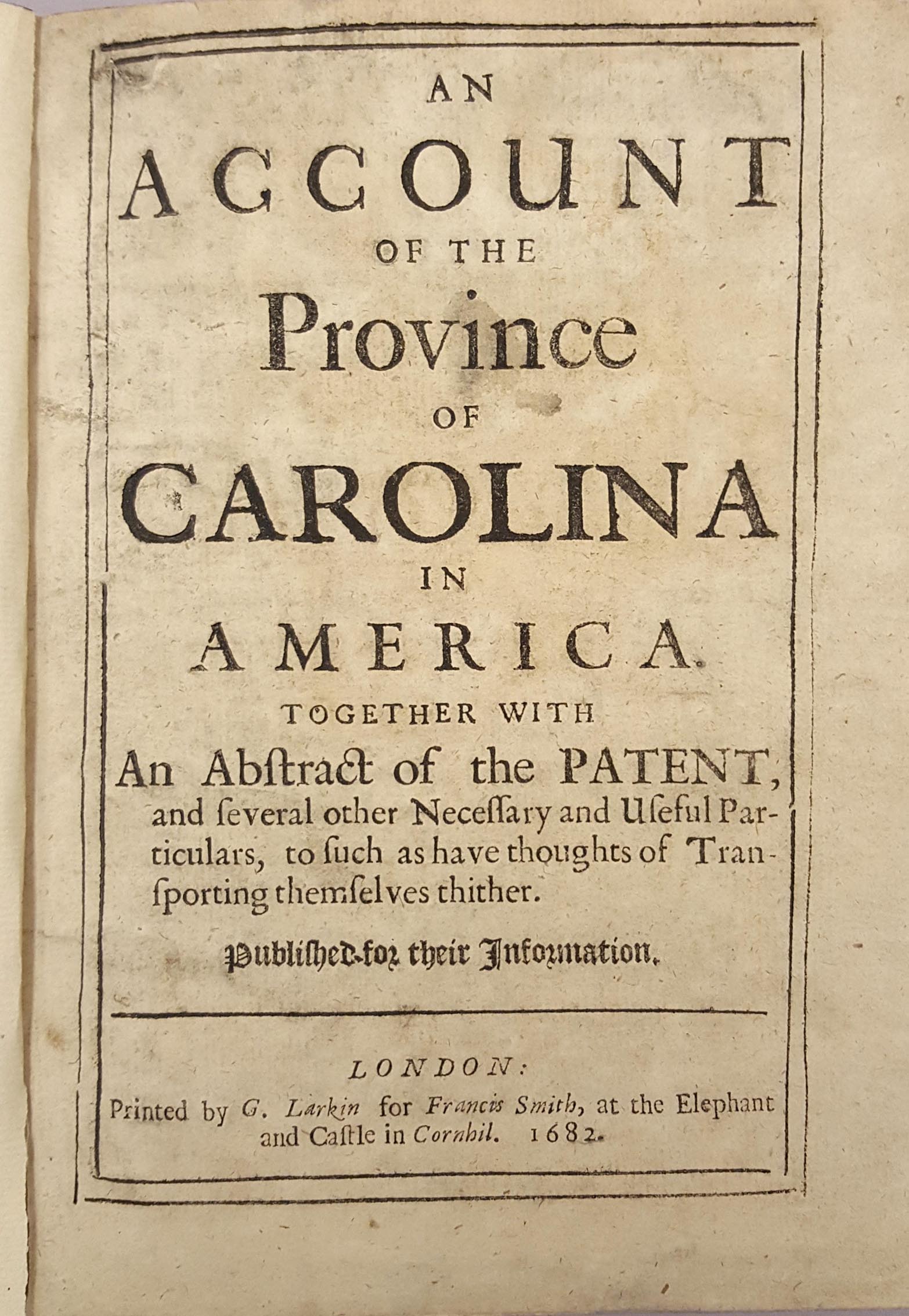
“There have been imported into Carolina about an hundred and fifty Mares and some Horses, from New York and Rhoad Island; which breed well and the coalts they have are finer lim’d and Headed than their Dams or Sires.”
An Account of the Province of Carolina in America, 1682
[Image courtesy of the John Carter Brown Library at Brown University]

“There have been imported into Carolina about an hundred and fifty Mares and some Horses, from New York and Rhoad Island; which breed well and the coalts they have are finer lim’d and Headed than their Dams or Sires.”
An Account of the Province of Carolina in America, 1682
[Image courtesy of the John Carter Brown Library at Brown University]
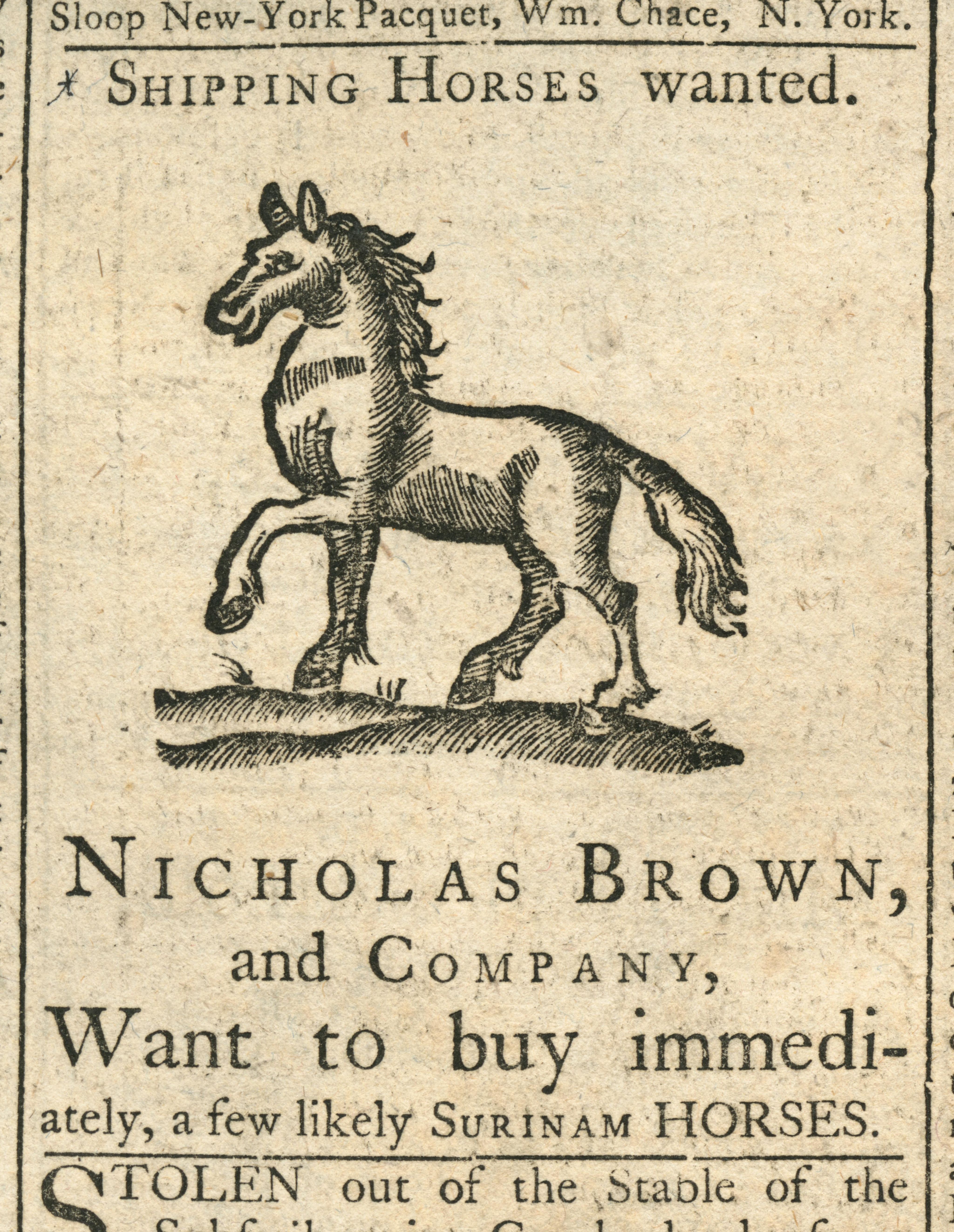
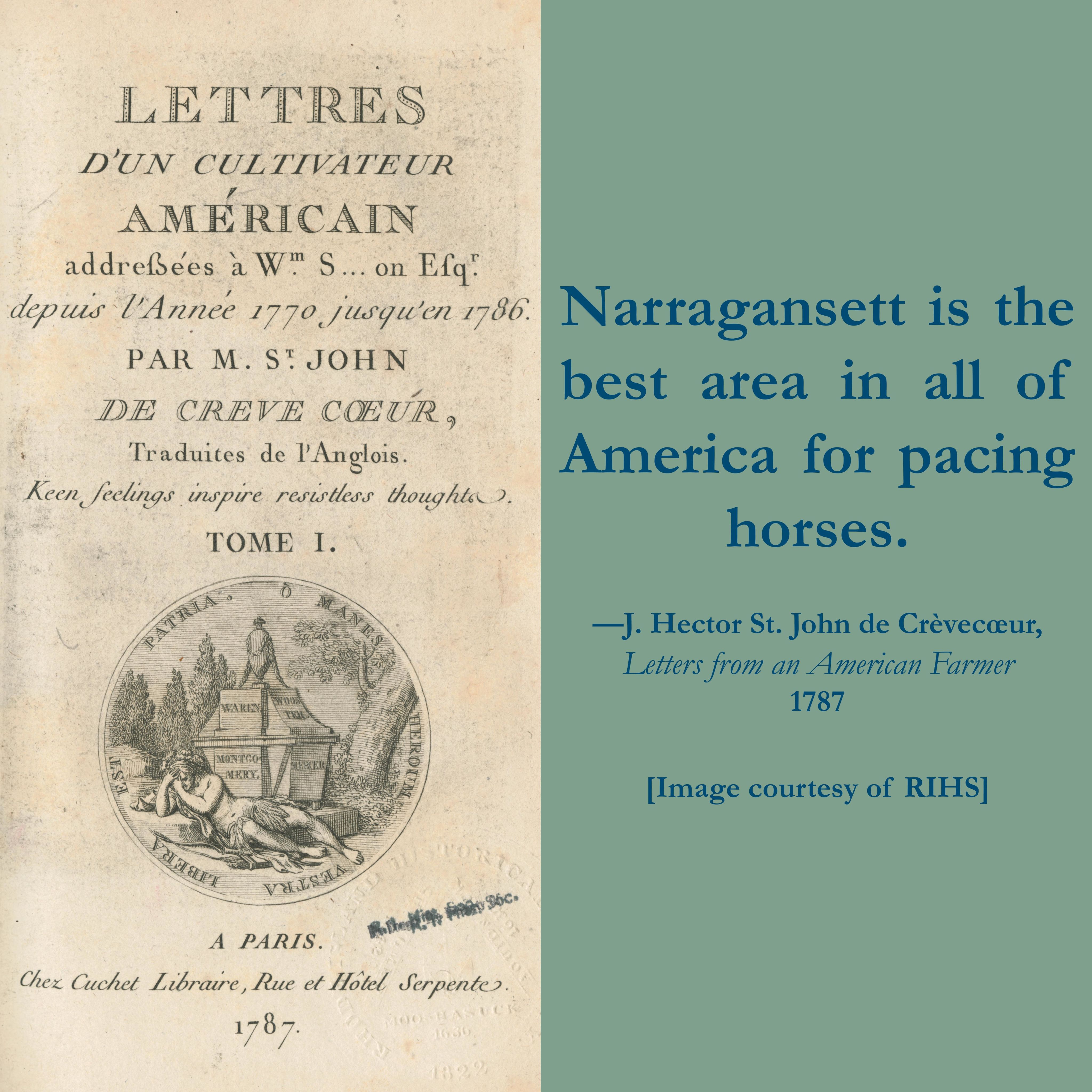


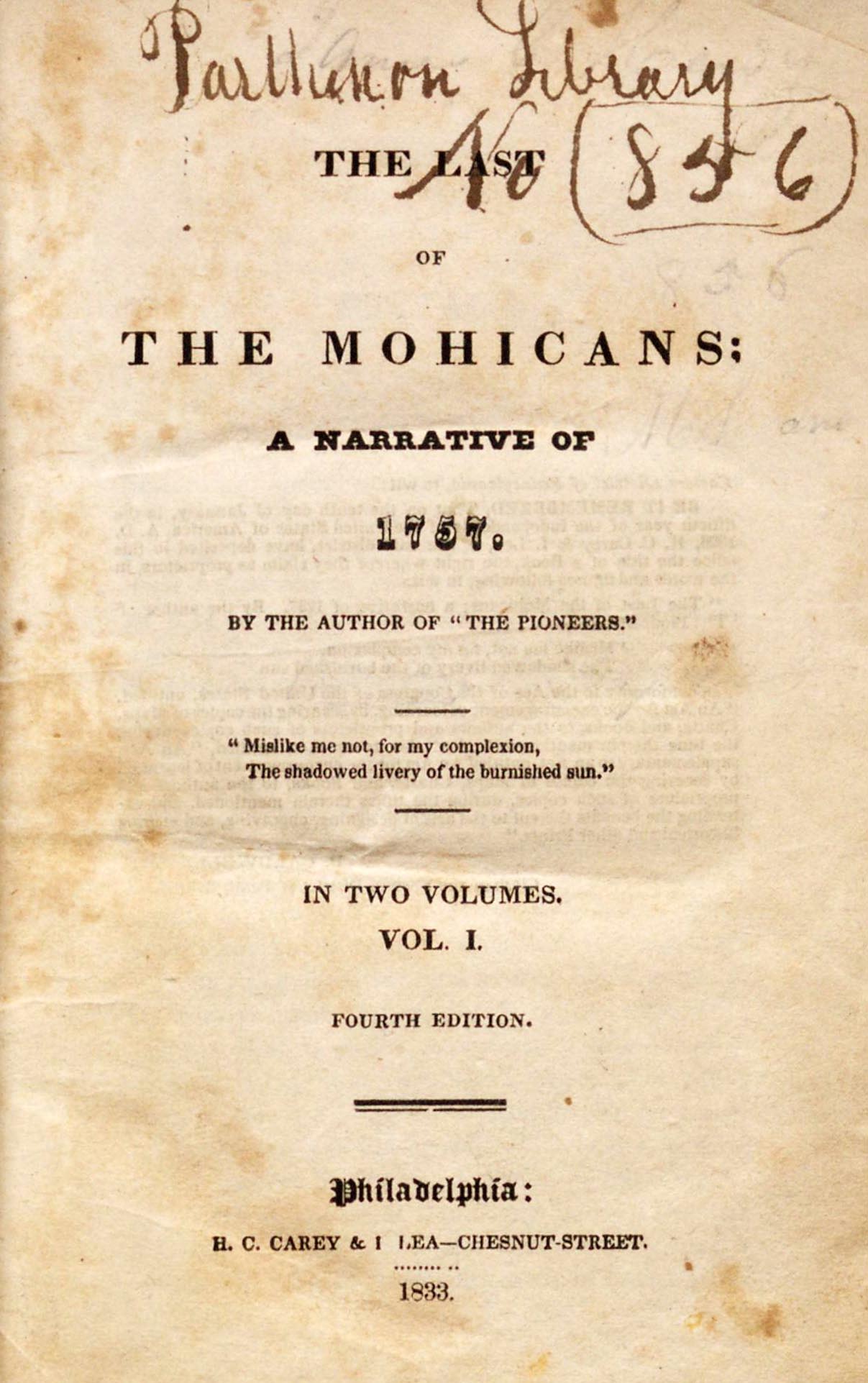

The Last of the Mohicans: A Tale of 1757,
James Fenimore Cooper, 1826
[Images courtesy of the John Hay Library, Brown University]


The Last of the Mohicans: A Tale of 1757,
James Fenimore Cooper, 1826
[Images courtesy of the John Hay Library, Brown University]
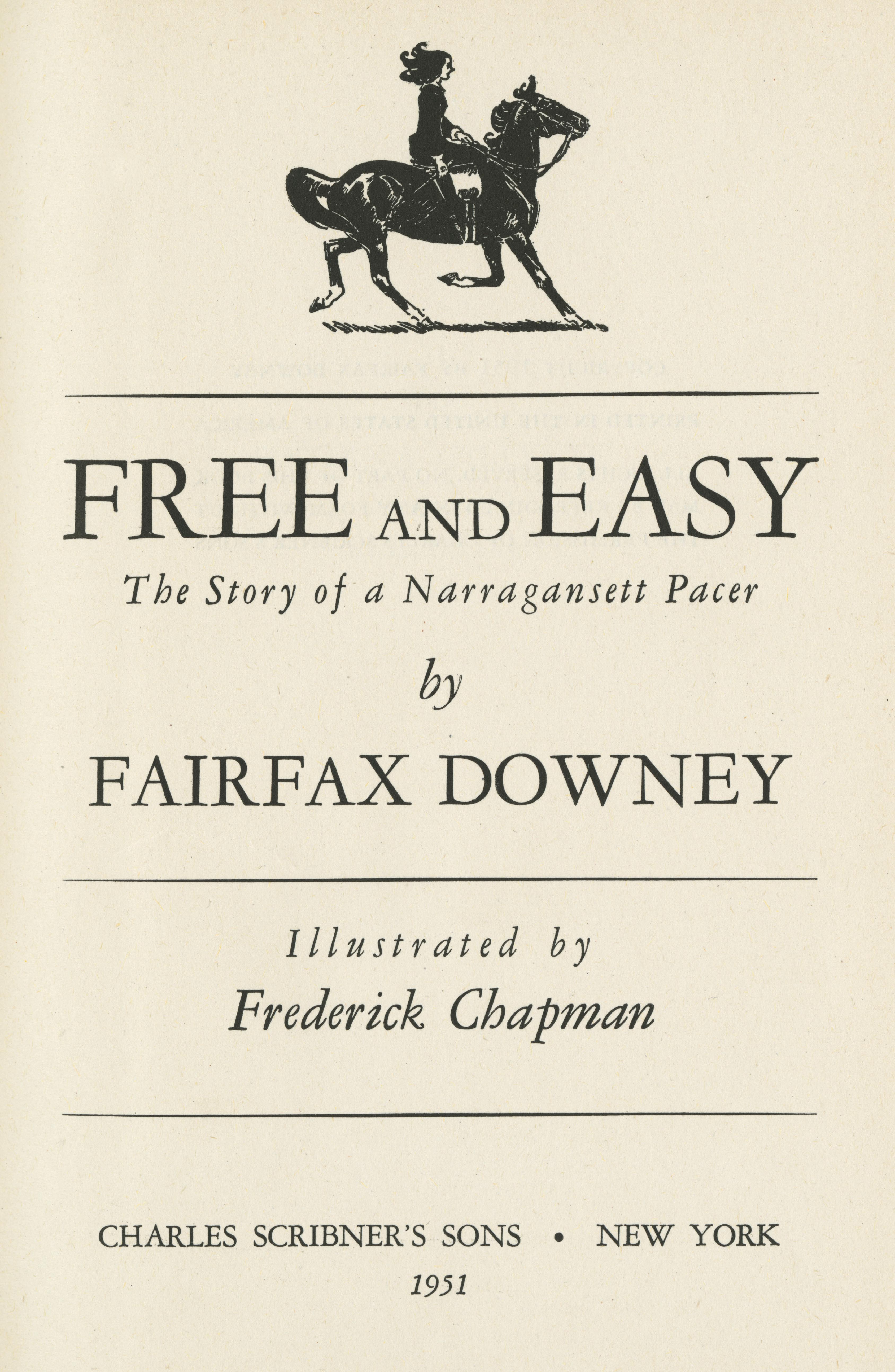
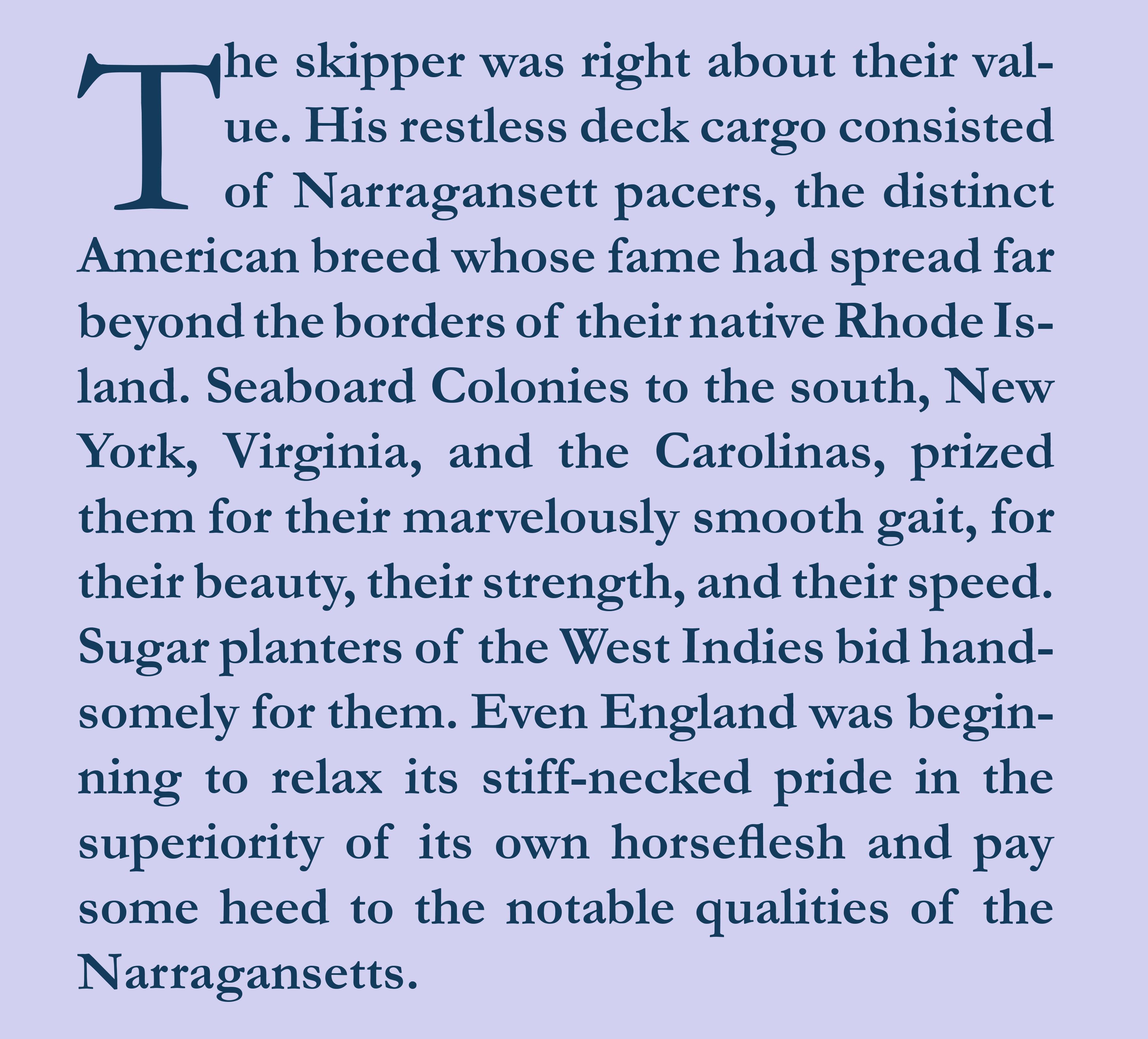
Free & Easy: The Story of a Narragansett Pacer,
Fairfax Downey, 1951
[Image courtesy of RIHS]


Free & Easy: The Story of a Narragansett Pacer,
Fairfax Downey, 1951
[Image courtesy of RIHS]
“Rhode Island’s equine breeding business was directly linked to the rapid rise of the sugar industry from latter half of the seventeenth through the eighteenth century. Rhode Island and the other Northern Colonies sent fish, foodstuffs, building supplies (such as timber, boards, and staves), cattle, and horses. In return, they obtained sugar, molasses, rum, dyestuffs, Spanish dollars, and Bills of Exchange from London.”
Charlotte Carrington-Farmer

“Rhode Island’s equine breeding business was directly linked to the rapid rise of the sugar industry from latter half of the seventeenth through the eighteenth century. Rhode Island and the other Northern Colonies sent fish, foodstuffs, building supplies (such as timber, boards, and staves), cattle, and horses. In return, they obtained sugar, molasses, rum, dyestuffs, Spanish dollars, and Bills of Exchange from London.”
Charlotte Carrington-Farmer

